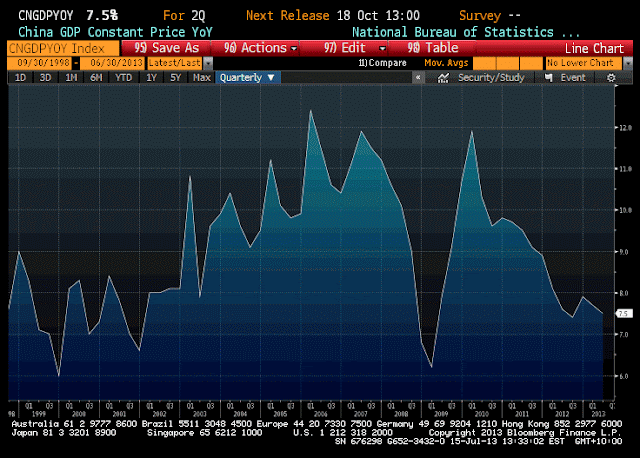Less than a month ago, the world's most powerful central banker unsettled financial markets when he laid out a timeline for ending the unprecedented stimulus to the US economy.
The comments from the Federal Reserve's chairman Ben Bernanke sparked big swings in both the US and Australian currencies and a global selloff of stocks.
But overnight in Washington, Dr Bernanke tried to soothe investor nerves when he said the end of the Fed's money printing program was not necessarily on a preset course.
Ben Bernanke’s carefully chosen words are critical as prepares to execute a smooth exit from the quantitative easing program where the Fed is buying US$85 billion of bonds every month.
The trouble is that investors remain addicted to what has become an era of cheap and easy money as the causes of the global financial crisis fade into history.
So any suggestion that the party is over because of good news about the US economic recovery is being greeted as bad news.
The US dollar dived when Dr Bernanke’s prepared statement hit markets and as a result the Australian dollar rocketed to 92.92 US cents in more evidence that Australia remains at the whim of words from Washington or Wall Street.
But the money printing has to end given that to since 2009 the Fed’s stimulus has quadrupled to US$3.5 trillion.
The numbers might be mind-boggling. But any suggestion, signal let alone decision to taper quantitative easing is enough to cause painful financial lurches around the world.
So when Dr Bernanke addressed Congress overnight, he was choosing his words more cautiously than usual and said that while the stimulus could be scaled back, it could also be pumped up in the event of the economic shock.
It appears Ben Bernanke knows he has to have a bet each way to have any chance of a smooth and graceful escape from the bond buying.
But the evidence is that investors are hearing what they want to hear and today they were celebrating that the easy money might be around for a while yet.
